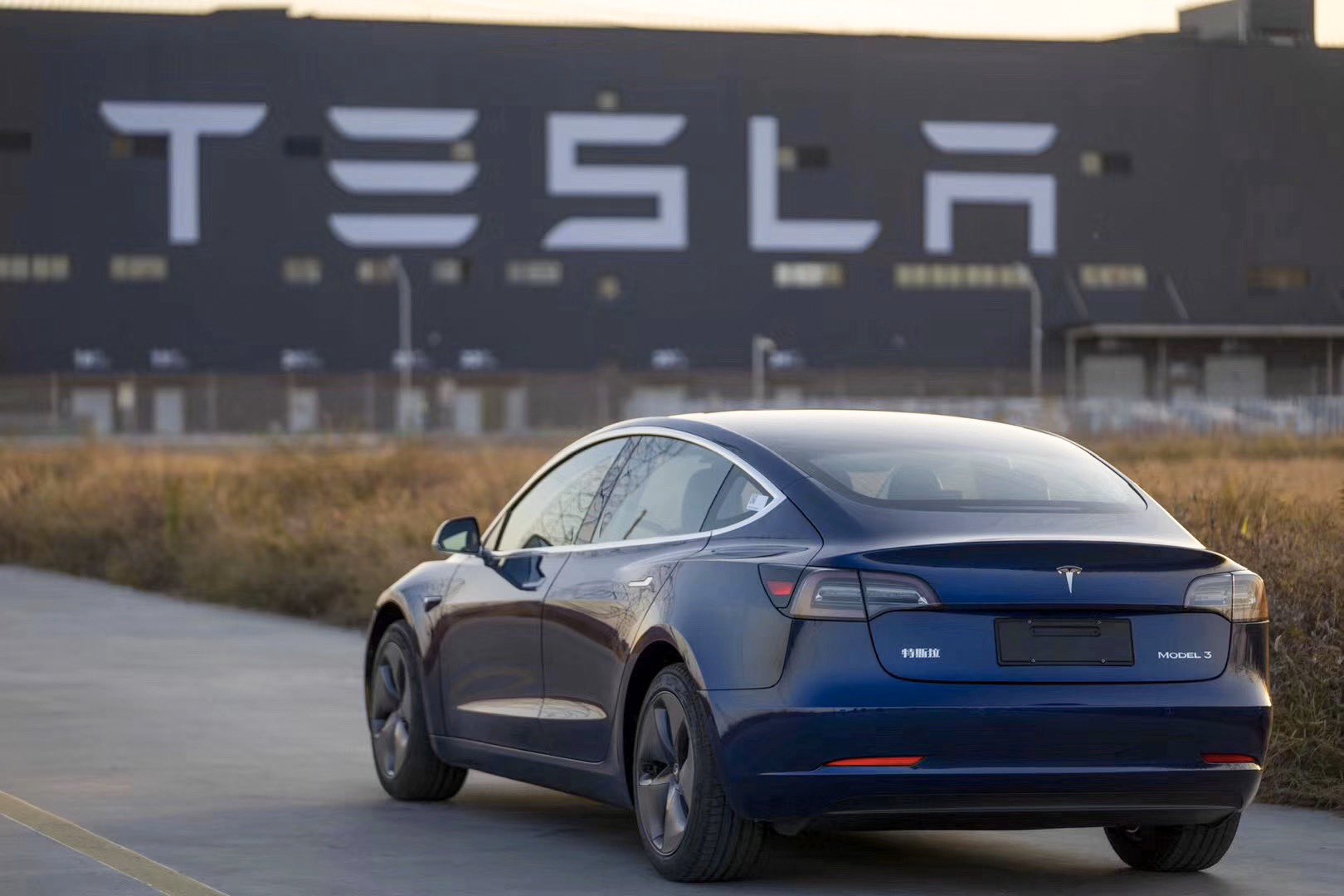
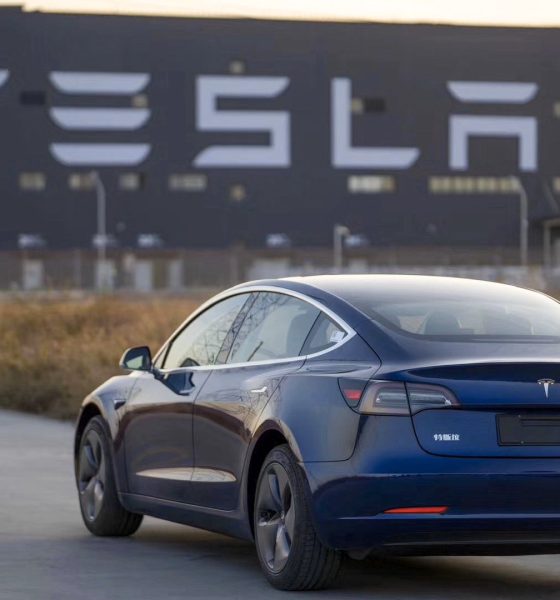
News
Tesla China pushes back MIC Model 3 deliveries amid coronavirus outbreak
As the novel coronavirus outbreak continues in China, Tesla has opted to postpone MIC Model 3 deliveries scheduled for February, at least until the situation in the country improves. The update was related by Tesla China VP for External Affairs Grace Tao Lin, who noted on Weibo that MIC Model 3 deliveries will likely be pushed back, perhaps as far back as the third quarter of 2020.
Giga Shanghai currently has a run rate of 3,000 Model 3s per week and is poised to hit an annual production rate of 150,000 vehicles. The company has also launched the Model Y program in the country. With these in mind, the recently-announced delays will likely set back the ramp of the locally-made Model 3, while potentially pushing back the Model Y program in the country.
Interestingly enough, Tesla has noted that it does not expect a big financial hit in China due to the coronavirus outbreak. This is because the MIC Model 3 only represents a small fraction of the company’s quarterly profits, according to Tesla’s finance chief Zach Kirkhorn during the company’s Q4 2019 earnings call.

Analysts currently expect markets to underperform because of the ongoing coronavirus outbreak. However, Tesla seems to be defying the odds so far. This week, the Tesla stock continued to soar, with the Silicon Valley-based electric carmaker surpassing the current valuation of Volkswagen and BMW combined on Monday. Tesla’s price per share hit past $900 and settled at $887.06 when the market closed on Tuesday
The real impact of production delays and supply chain issues might be felt soon though if the closure of factories across China will be stretched to mid-March. Automotive research firm IHS Markit estimates that carmakers may lose about 1.7 million units during the first quarter of 2020. This corresponds to a 32.3% decline from the firm’s initial estimates.
“In this scenario, we might expect the potential of a China-wide supply chain disruption caused by parts shortages from Hubei, a major component hub — and adjacent province closures for the majority of the month of February as a result,” IHS Markit wrote in a press release.
The Shanghai government has ordered the shutdown of companies in the city, including Giga Shanghai, amid the coronavirus outbreak. Government and private companies are not allowed to resume operations before Feb. 9. Prior to the suspension of work, the government has also extended the Lunar New Year holidays to help control the spread of the 2019-nCOV that started in Wuhan, a city about 9 hours away by car from Shanghai.
Tesla is not the sole automaker that is being affected by the ongoing outbreak. Hyundai, Toyota, Ford, Nissan, Volkswagen, Daimler, and Continental have also shut down their respective factories in China due to the virus.
Based on the latest updates, there are more than 24,000 people infected by the coronavirus that causes fever, serious respiratory illness, impaired liver function, and kidney failure. As of Wednesday local time, there have been 490 deaths reported in connection to the virus. The World Health Organization has declared the outbreak, which has infected people in 25 countries, a public health emergency. The United States and several countries have also implemented travel bans to and from China.
In response to the coronavirus outbreak, Tesla China has offered local customers free Supercharging for an indefinite time to make traveling easier for drivers who reside in areas affected by the outbreak.
Amid the public health scare, Tesla has continued to provide customer support through Douyin, China’s version of TikTok. Tesla sales staff from certain experience centers live-streamed tours of the Made-in-China Model 3 and entertained questions from potential buyers. The company has also posted schedules of the live streams that interested consumers can join via Douyin.
Meanwhile, Tesla owners in China united to raise 123,000 yuan or about $17,500 to purchase N95 masks, surgical masks, and sets of protective clothing that they plan to donate to different hospitals treating patients infected by the coronavirus. Tesla has also donated 5 million yuan or more than $700,000 to assist the government and other institutions involved in disease control.
The recent news from China appears to have weighed down on Tesla stock. As of writing, TSLA stock is trading

News
Tesla gets a win in Sweden as union withdraws potentially “illegal” blockade
As per recent reports, the Vision union’s planned anti-Tesla action might have been illegal.
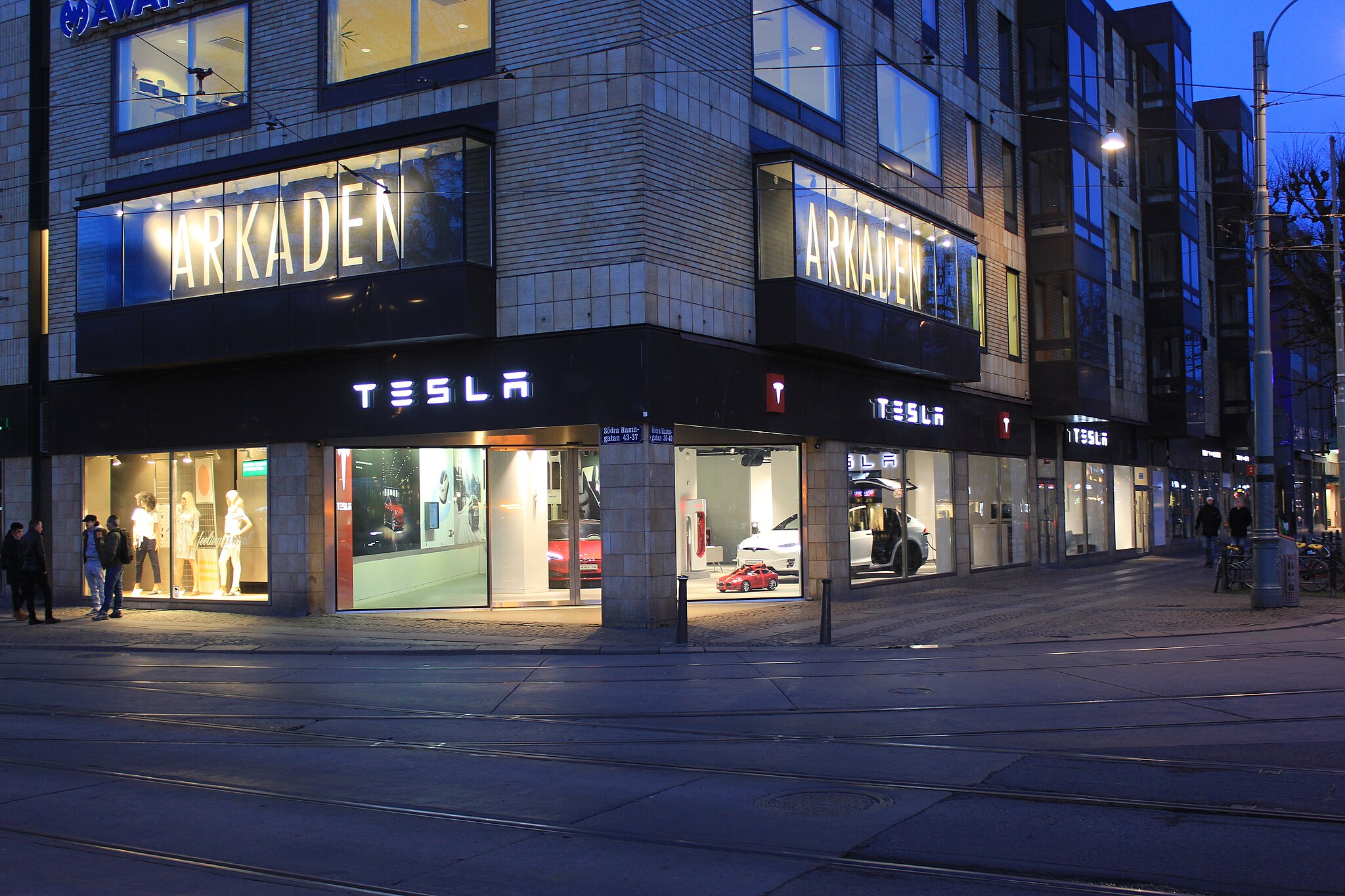
Swedish union Vision has withdrawn its sympathy blockade against Tesla’s planned service center and showroom in Kalmar. As per recent reports, the Vision union’s planned anti-Tesla action might have been illegal.
Vision’s decision to pull the blockade
Vision announced the blockade in early December, stating that it was targeting the administrative handling of Tesla’s facility permits in Kalmar municipality. The sympathy measure was expected to start Monday, but was formally withdrawn via documents sent to the Mediation Institute and Kalmar Municipality last week.
As noted in a Daggers Arbete report, plans for the strike were ultimately pulled after employer group SKR highlighted potential illegality under the Public Employment Act. Vision stressed its continued backing for the Swedish labor model, though Deputy negotiation manager Oskar Pettersson explained that the Vision union and IF Metall made the decision to cancel the planned strike together.
“We will not continue to challenge the regulations,” Petterson said. “The objection was of a technical nature. We made the assessment together with IF Metall that we were not in a position to challenge the legal assessment of whether we could take this particular action against Tesla. Therefore, we chose to revoke the notice itself.”
The SKR’s warning
Petterson also stated that SKR’s technical objection to the Vision union’s planned anti-Tesla strike framed the protest as an unauthorized act. “It was a legal assessment of the situation. Both for us and for IF Metall, it is important to be clear that we stand for the Swedish model. But we should not continue to challenge the regulations and risk getting judgments that lead nowhere in the application of the regulations,” he said.
Vision ultimately canceled its planned blockade against Tesla on December 9. With Vision’s withdrawal, few obstacles remain for Tesla’s long-planned Kalmar site. A foreign electrical firm completed work this fall, and Tesla’s Careers page currently lists a full-time service manager position based there, signaling an imminent opening.
News
Tesla Semi program Director teases major improvements
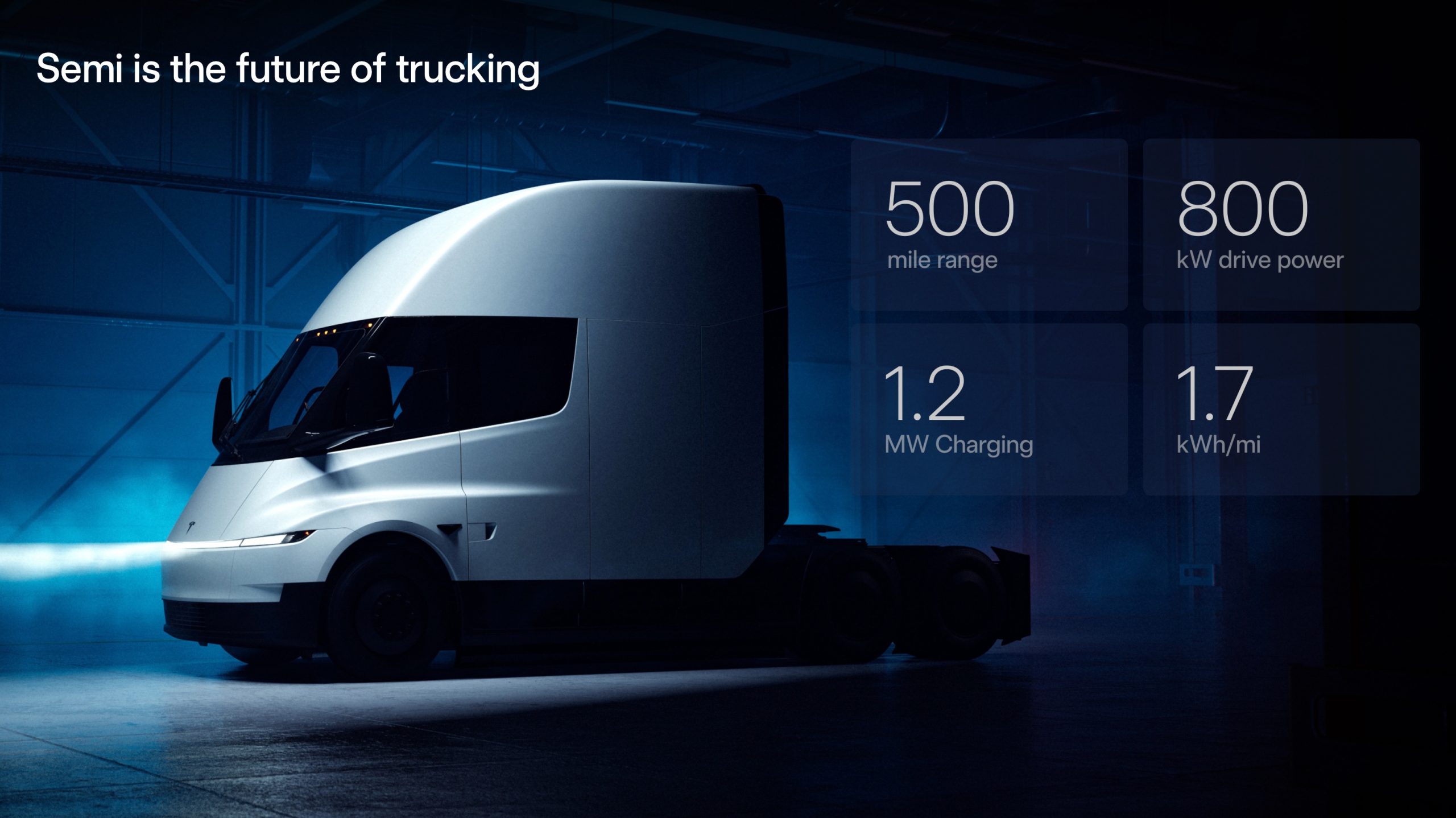
Tesla Semi Program Director Dan Priestly teased the major improvements to the all-electric Class 8 truck on Thursday night, following the company’s decision to overhaul the design earlier this year.
Priestley said he drove the Semi on Thursday, and the improvements appear to be welcomed by one of the minds behind the project. “Our customers are going to love it,” he concluded.
Just drove the redesigned Semi. Our customers are going to love it. https://t.co/KZ88sf1CDL
— Dan Priestley (@danWpriestley) December 19, 2025
The small detail does not seem like much, but it is coming from someone who has been involved in the development of the truck from A to Z. Priestley has been involved in the Semi program since November 2015 and has slowly worked his way through the ranks, and currently stands as the Director of the program.
Tesla Semi undergoes major redesign as dedicated factory preps for deliveries
Tesla made some major changes to the Semi design as it announced at the 2025 Annual Shareholder Meeting that it changed the look and design to welcome improvements in efficiency.
Initially, Tesla adopted the blade-like light bar for the Semi, similar to the one that is present on the Model Y Premium and the Cybertruck.
Additionally, there are some slight aesthetic changes to help with efficiency, including a redesigned bumper with improved aero channels, a smaller wraparound windshield, and a smoother roofline for better aero performance.
All of these changes came as the company’s Semi Factory, which is located on Gigafactory Nevada’s property, was finishing up construction in preparation for initial production phases, as Tesla is planning to ramp up manufacturing next year. CEO Elon Musk has said the Semi has attracted “ridiculous demand.”
The Semi has already gathered many large companies that have signed up to buy units, including Frito-Lay and PepsiCo., which have been helping Tesla test the vehicle in a pilot program to test range, efficiency, and other important metrics that will be a major selling point.
Tesla will be the Semi’s first user, though, and the truck will help solve some of the company’s logistics needs in the coming years.
News
Tesla dominates in the UK with Model Y and Model 3 leading the way
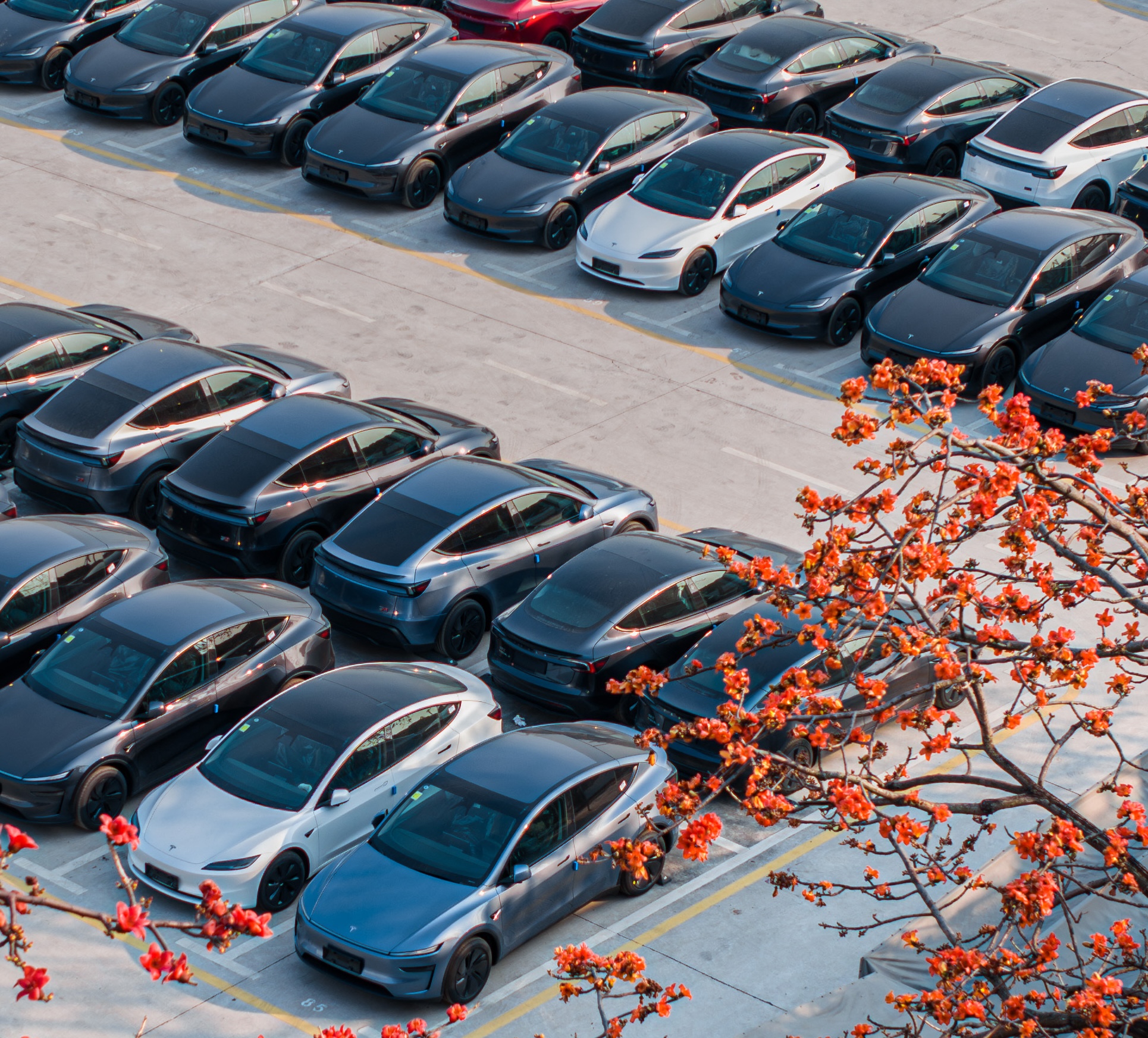
Tesla is dominating in the United Kingdom so far through 2025, and with about two weeks left in the year, the Model Y and Model 3 are leading the way.
The Model Y and Model 3 are the two best-selling electric vehicles in the United Kingdom, which is comprised of England, Scotland, Wales, and Northern Ireland, and it’s not particularly close.
According to data gathered by EU-EVs, the Model Y is sitting at 18,890 units for the year, while the Model 3 is slightly behind with 16,361 sales for the year so far.
The next best-selling EV is the Audi Q4 e-tron at 10,287 units, lagging significantly behind but ahead of other models like the BMW i4 and the Audi Q6 e-tron.
GOOD NEWS 🇬🇧 Tesla is absolutely crushing the UK electric vehicle market in 2025 💥
The numbers are in, and the dominance is clear. With an impressive amount of 42,270 vehicles delivered year-to-date, the brand now commands a solid 9.6% market share of the total auto market 🆒… pic.twitter.com/dkiGX9kzd0
— Ming (@tslaming) December 18, 2025
The Model Y has tasted significant success in the global market, but it has dominated in large markets like Europe and the United States.
For years, it’s been a car that has fit the bill of exactly what consumers need: a perfect combination of luxury, space, and sustainability.
Both vehicles are going to see decreases in sales compared to 2024; the Model Y was the best-selling car last year, but it sold 32,610 units in the UK. Meanwhile, the Model 3 had reached 17,272 units, which will keep it right on par with last year.
Tesla sold 50,090 units in the market last year, and it’s about 8,000 units shy of last year’s pace. It also had a stronger market share last year with 13.2 percent of the sales in the market. With two weeks left in 2025, Tesla has a 9.6 percent market share, leading Volkswagen with 8 percent.
The company likely felt some impact from CEO Elon Musk’s involvement with the Trump administration and, more specifically, his role with DOGE. However, it is worth mentioning that some months saw stronger consumer demand than others. For example, sales were up over 20 percent in February. A 14 percent increase followed this in June.








